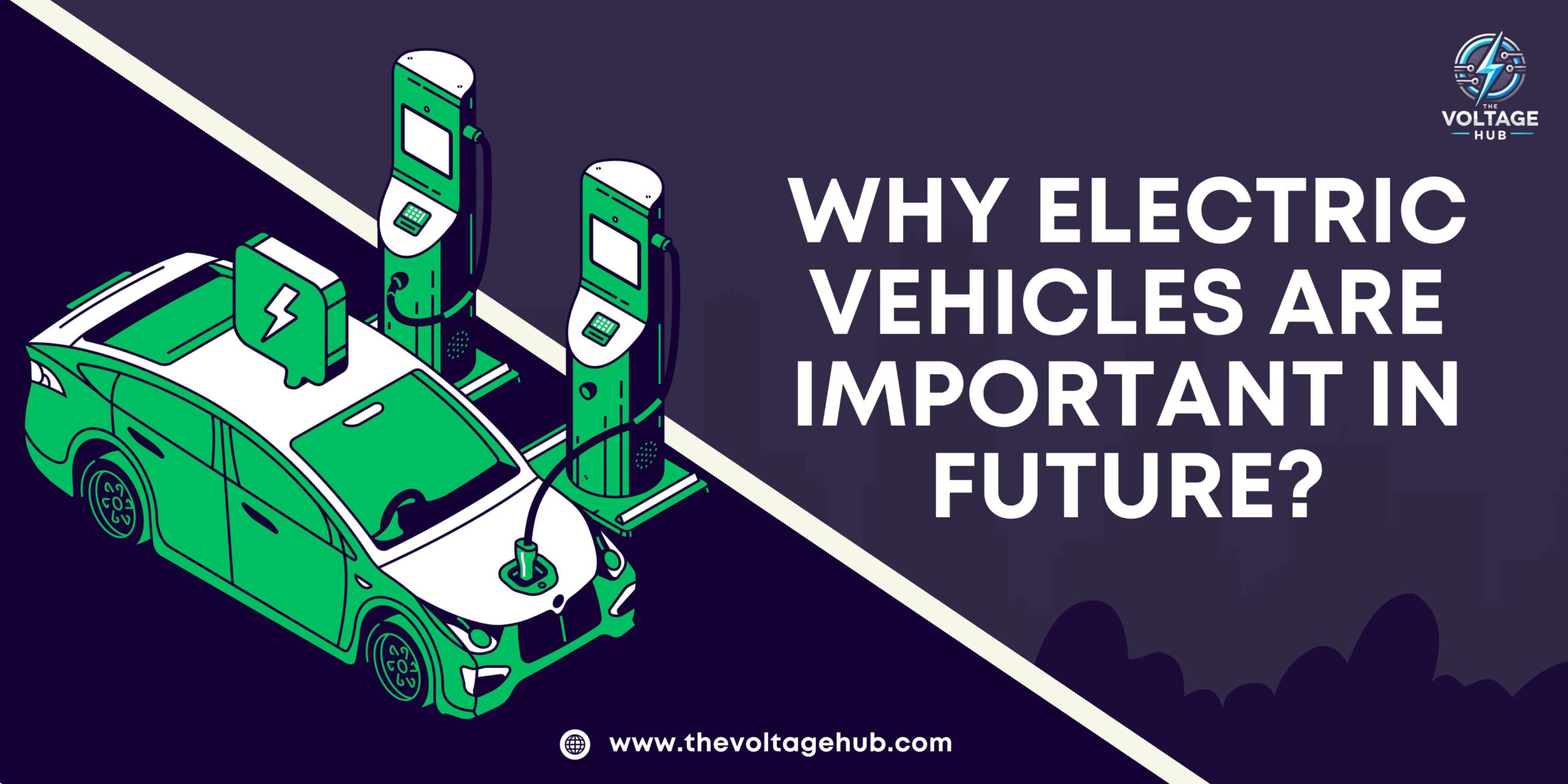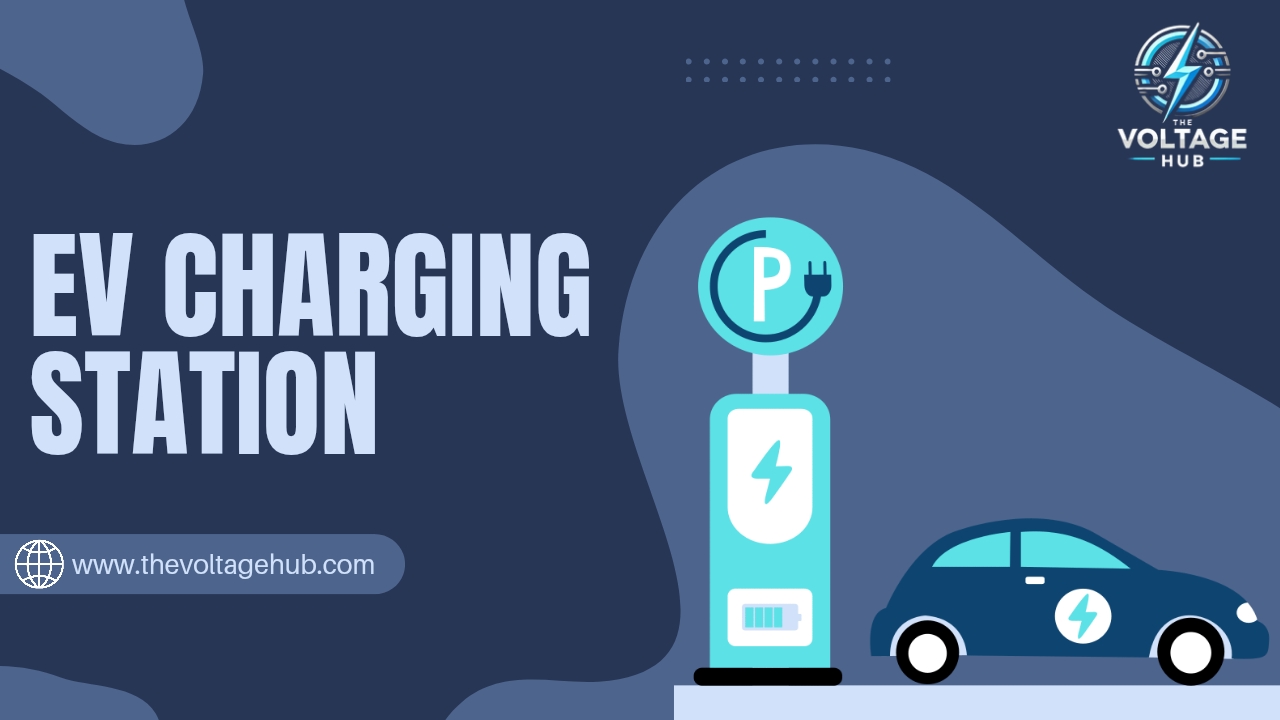Table Of Content
- 1 What Are Electric Vehicles?
- 2 Types of Electric Vehicles
- 3 EV Components and Architecture
- 4 Benefits of Electric Vehicle
- 5 What are the challenges of electric vehicles ?
- 6 The advantages and disadvantages of electric vehicles?
- 7 Social and Cultural Impact of Electric Vehicles
- 8 Economic Benefits of Electric Vehicles
- 9 Conclusion
- 10 FAQs
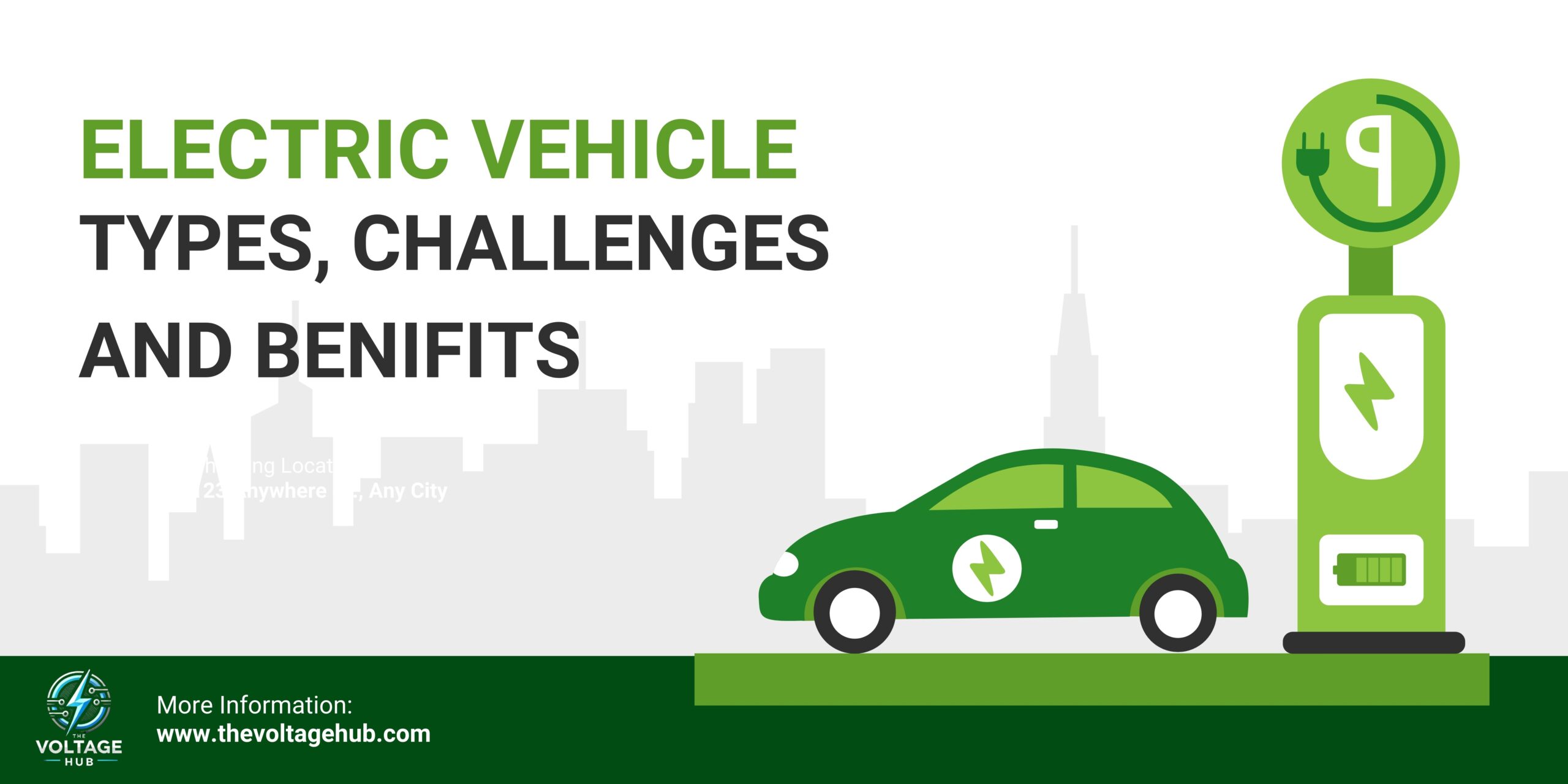
Electric vehicles are growing concerns over climate change, rising fuel prices, and the need for sustainable energy solutions, EVs have emerged as a viable alternative to traditional gasoline-powered vehicles. This article provides a comprehensive introduction to electric vehicles, their types, advantages, challenges, and the exciting future ahead.
What Are Electric Vehicles?
Electric vehicles are defined as vehicles that use an electric motor for propulsion. They are powered by one or more electric motors, receiving energy from an onboard source of electricity such as batteries, fuel cells, ultracapacitors, or flywheels. The electrical energy from the power source is used to operate the electric motor, which then turns the wheels and provides propulsion. EVs include a wide range of vehicles, from electric two-wheelers, three-wheelers, and cars to electric buses and trucks.

Types of Electric Vehicles
Electric vehicles can be categorized into three main types based on their power source and functionality:
Hybrid Electric Vehicles (HEVs)
Supplemental Power: HEVs generate electricity onboard using a gasoline engine and regenerative braking.
Dual Drive Systems:
- Gasoline engine with a fuel tank.
- Electric motor with a battery.
Power Distribution: Both the engine and electric motor can operate together to drive the transmission and wheels.
Non-Rechargeable: HEVs cannot be charged from the electricity grid. Used at low speeds, such as in urban areas or traffic jams. Reduces fuel consumption by keeping the engine off during idling.
Plug-in Hybrid Electric Vehicles (PHEVs)
Plug-in Hybrid Electric Vehicles (PHEVs) combine a traditional internal combustion engine (ICE) with an electric motor and a rechargeable battery. They can run on electricity alone for 20–50 miles, making them ideal for short trips, and switch to the ICE for longer journeys. PHEVs are charged via an outlet or charging station and use regenerative braking to boost efficiency.
Benefits :
-
-
- Lower fuel consumption
- Reduced emissions
- Flexibility for city and long-distance driving
-
Popular Models: Toyota Prius Prime, Mitsubishi Outlander PHEV, and BMW 330e.
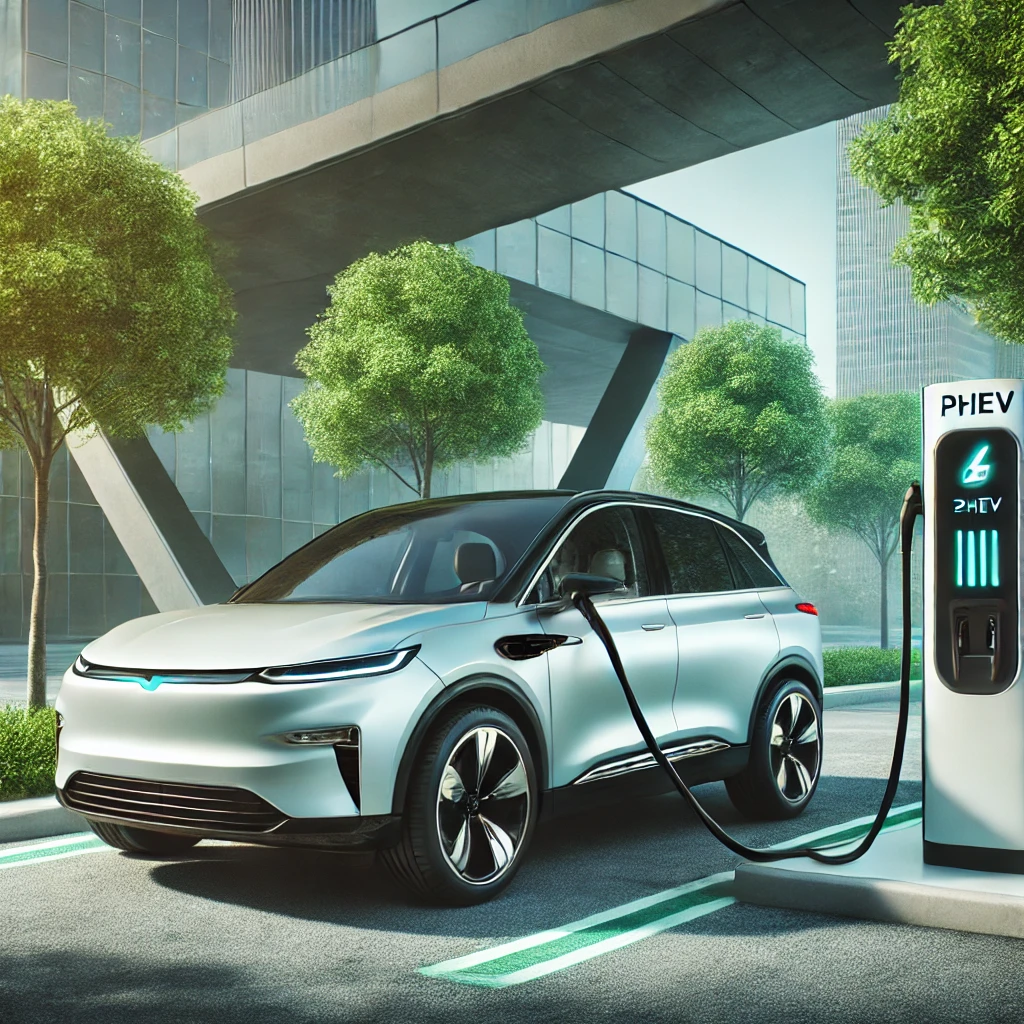
Battery Electric Vehicles (BEVs)
Battery Electric Vehicles (BEVs) operate solely using an electric motor and battery, without relying on a traditional internal combustion engine. They must be plugged into an external power source to recharge. Additionally, BEVs utilize regenerative braking, which slows the vehicle while recovering energy that would otherwise be lost as heat.
BEVs are fully electric and drive the wheels directly through electric motors powered by batteries via a controller circuit. Examples of BEVs include Tesla Model 3, Nissan Leaf, and Chevrolet Bolt. These vehicles offer zero tailpipe emissions and high energy efficiency, making them a sustainable transportation choice.
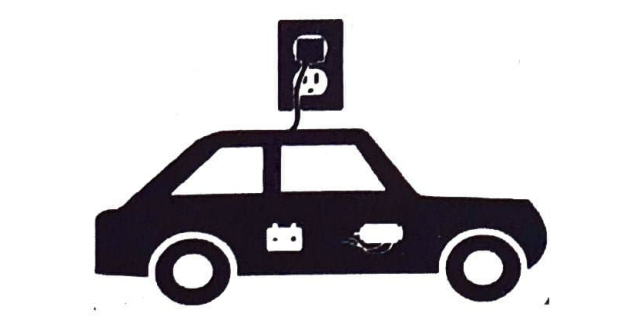
EV Components and Architecture
Electric Vehicles (EVs) consist of various essential components that work together to ensure efficient performance and energy utilization. Below is a detailed breakdown of EV components and their architecture.
1. Key Components of an Electric Vehicle (EV)
1.1. Electric Motor
- motor are the convert mechnical energy to electrical energy usnig driven wheels.
- Types of motors used in EVs:
- DC Motors: Brushed DC Motor (BDC), Brushless DC Motor (BLDC)
- AC Motors: Induction Motor (IM), Permanent Magnet Synchronous Motor (PMSM), Switched Reluctance Motor (SRM)
1.2. Battery Pack
- Stores electrical energy required to power the motor.
- Composed of multiple cells arranged in series and parallel configurations.
- Types of batteries used in EVs:
- Lithium-ion (Li-ion) – Most common
- Solid-state batteries (Future technology)
- Nickel-Metal Hydride (NiMH)
1.3. Power Electronics
- Manages the power conversion and distribution within the EV.
- Includes:
- Inverter: The converts direct current to ac current .
- DC-DC Converter: Steps down high-voltage DC to low-voltage DC for auxiliary systems.
- On-board Charger (OBC): Converts AC power from a charging station to DC to charge the battery.
1.4. Regenerative Braking System
- Converts kinetic energy back into electrical energy to recharge the battery while braking.
- Enhances efficiency and extends range.
1.5. Transmission System
- Transmission sytem means the power transer use the vehicle wheels
- EVs usually have single-speed transmissions, as electric motors operate efficiently across a wide RPM range.
1.6. Battery Management System (BMS)
- Monitors and controls battery temperature, voltage, and state of charge (SoC).
- Ensures battery safety and longevity.
1.7. Charging System
- On-Board Charging System: Converts AC from external sources to DC to charge the battery.
- External Chargers: Level 1, Level 2, and DC Fast Charging stations provide different charging speeds.
1.8. Thermal Management System
- Maintains optimal temperature of the battery, motor, and power electronics.
- Methods used:
- Liquid Cooling – Most efficient for high-performance EVs.
- Air Cooling – Used in lower-cost EVs.
1.9. Vehicle Control Unit (VCU)
- Acts as the brain of the EV, controlling motor performance, power distribution, and safety features.
- Works in coordination with Electronic Control Units (ECUs) for various subsystems.
2. EV Architecture
2.1. Series Architecture
- The electric motor is the only driving force.
- The engine (in hybrid vehicles) only generates electricity, not powering the wheels directly.
2.2. Parallel Architecture
- Both the internal combustion engine (ICE) and electric motor can drive the wheels.
- Used in hybrid electric vehicles (HEVs).
2.3. Series-Parallel Hybrid Architecture
- A combination of both series and parallel systems.
- Provides better efficiency and flexibility.
2.4. Fully Electric Architecture (BEV)
- No internal combustion engine, purely powered by batteries.
- Simplified drivetrain with fewer moving parts.
3. Working Principle of EV Components
- Power Supply: The battery pack provides DC power.
- Power Conversion: The inverter converts DC to AC for the motor.
- Motor Operation: The electric motor drives the wheels via a single-speed transmission.
- Energy Recovery: Regenerative braking recaptures energy and stores it in the battery.
- Charging Process: External power sources recharge the battery through the charging port.
Benefits of Electric Vehicle
Electric vehicles (EVs) are revolutionizing transportation with their eco-friendly and cost-efficient benefits. Here’s why they’re a smart choice:
1. Environmentally Friendly : EVs produce zero emissions, reducing air pollution and helping fight climate change.
2. Cost Savings : With lower fuel and maintenance costs, EVs save money over time.
3. Convenience: Charge your car at home and skip gas station visits. Many EVs also offer cutting-edge tech and a smoother driving experience.
4. Government Support: Many countries are investing in EV infrastructure, offering more charging stations and policy support.
5. Energy Efficient: Electric motors are more efficient than gas engines, making EVs a sustainable choice for the future.
What are the challenges of electric vehicles ?
Electric vehicles are paving the way for a sustainable future, but they face certain challenges that need to be addressed. Here’s a look at the key hurdles:
1. High Initial Cost: EVs are often more expensive upfront compared to traditional cars, primarily due to the cost of batteries.
2. Limited Charging Infrastructure: The availability of charging stations is still a concern in many regions, making long-distance travel challenging.
3. Battery Life and Recycling: Lithium-ion3 batteries degrade over time and pose environmental risks if not recycled properly.
4. Range Anxiety: Fear of running out of battery power during a trip discourages potential buyers.
5. Charging Time: Unlike refueling a gas car, charging an EV can take anywhere from 30 minutes to several hours, depending on the charger type.
6. Cold Weather Performance: EV efficiency can drop in extremely cold climates, affecting battery life and driving range.
7. Limited Model Options: While the EV market is growing, it still lacks the variety of models available in traditional vehicles.
The advantages and disadvantages of electric vehicles?
Advantages of Electric Vehicles (EVs)
Electric vehicles are transforming the way we think about transportation and grow With a focus on sustainability and innovation, EVs are quickly becoming the future of mobility. Here’s a closer look at why EVs are a game-changer:
1. Environmentally Friendly: Electric vehicles produce zero emissions when driving. Unlike traditional cars that run on petrol or diesel, EVs don’t release harmful gases into the air, which helps reduce air pollution and fight climate change.
2. Lower Running Costs: Charging an EV costs less than filling up a tank with fuel. Plus, they have fewer moving parts, so maintenance costs are lower compared to petrol or diesel cars.
3. Quieter Driving Experience: EVs are much quieter than regular cars. This makes the driving experience smoother and also helps reduce noise pollution in cities.
4. Government Incentive: Many governments offer incentives like tax breaks, discounts, or subsidies for buying EVs. Some even provide free parking or access to special lanes for EV owners.
5. Energy Efficiency: Electric vehicles are more energy-efficient than fuel-powered cars. This means they use less energy to travel the same distance, making them a smarter choice for daily commutes.
6. Support for Renewable Energy: EVs can be charged using renewable energy like solar or wind power, making them even more sustainable and eco-friendly.
7. Reduced Dependence on Fossil Fuels: Using electricity instead of petrol or diesel reduces the demand for fossil fuels, helping to conserve natural resources.
Disadvantages of Electric Vehicles (EVs)
While electric vehicles (EVs) offer many benefits, they also come with some challenges. Here are the main disadvantages of EVs explained in simple terms
1.Limited Range
On a single charge, EVs can travel only 80–160 km, which might not be enough for long-distance trips.
2.Low Top Speed
Most EVs have limited top speeds compared to fuel-powered cars, which might not suit those who prefer high-speed driving.
3.Heavy and Bulky
EVs are heavier because of their large batteries, which can affect handling and efficiency.
4.Few Charging Stations
Public charging infrastructure is still growing, and finding charging stations can be difficult in many areas.
Social and Cultural Impact of Electric Vehicles
1. Changing Consumer Perceptions
As more people become aware of the benefits of EVs, consumer attitudes are shifting toward sustainable and eco-friendly transportation options.
2. Urban Planning and Smart Cities
The rise of EVs is influencing urban planning, with cities incorporating charging stations and EV-friendly policies into their infrastructure.
3. Increased Awareness of Sustainability
EVs are playing a key role in raising awareness about sustainability and encouraging individuals and businesses to adopt greener practices.
Economic Benefits of Electric Vehicles
1. Job Creation in the EV Industry
The growing demand for electric vehicles is creating new jobs in manufacturing, research, and infrastructure development.
2. Reduced Dependence on Fossil Fuels
EVs reduce reliance on imported oil, enhancing energy security and reducing vulnerability to fluctuating oil prices.
3. Long-Term Savings for Consumers
While the upfront cost of EVs may be higher, the lower operating and maintenance costs can lead to significant savings over the vehicle’s lifetime.
Conclusion
Electric vehicles are more than just a trend—they are a crucial step toward a sustainable future. With advancements in technology, expanding infrastructure, and growing consumer awareness, EVs are set to become the norm in the automotive industry. While challenges like charging infrastructure and battery recycling remain, the benefits of EVs far outweigh the drawbacks.

